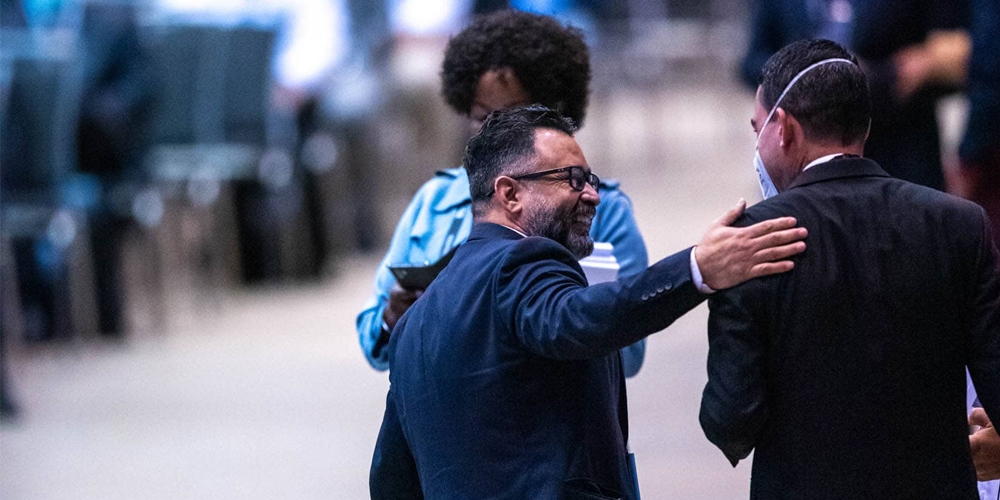
When Nominating Committee at the General Conference (GC) Session makes a selection for a new appointment and that person suddenly has a new job in a new country, it can be a lot to take in. As we’ve walked around the Dome in St. Louis, it hasn’t been hard to spot certain faces revealing many emotions — the shock, the appreciation, the sense of being greatly overwhelmed.
While these church leaders find themselves on a trajectory to a new place and ministry challenge and may be glad of it, a new appointment often heralds times of great transition. And the transition — which can be difficult — is one that Seventh-day Adventist missionaries have made for more than 100 years. Such is the sacrifice of the missionary.
To be clear, missionaries, or international service employees (ISEs), as they are more commonly known now, are classified as such as long as they cross division boundaries. So even if those newly appointed at GC Session never applied to serve as ISEs, technically the move to the new position makes them exactly that.
Once the shock wears off, there is certainly a lot to take on board. So, at every GC Session, employees of the Human Resources Unit (HR), Office of General Counsel (OGC), and International Personnel Resources and Services (IPRS) are present to help those who are transitioning to get started on what can certainly be an arduous process. IPRS is managed by Secretariat and Treasury. “When leaders are elected to fill positions in the General Conference or divisions, GC Secretariat and Treasury play a key role through IPRS, providing support to these individuals if they come from a different division,” German Lust (pronounced “Hairmann Loost”) of GC Treasury says. “This support is provided through visa processing, financial support for the move, shipping of personal belongings, et cetera.”
Once the new appointee has been elected at Session, they will usually receive an appointment to stop by HR and OGC, where the process gets started. “We have one person here, Rebecca Wilhelm, who talks to them and shares the process,” Karen Porter, associate secretary and co-director of IPRS with Lust, says. “Wilhelm will get basic information and family details and any documents they may have with them—copies of passports, those kinds of things, so we can begin the process of transitioning them to their new location, whether at the GC in the United States or another country.”
This is a service that undoubtedly helps a family with the difficult job of shifting their entire lives to a new place. “The sooner we get their information, documents, and details, the faster we can get them to their new location. That’s why we start with them here and continue the process after they leave and we go back home,” Porter adds.
From GC Session to the day when a newly elected leader arrives at their place of work can take a few months. According to Wilhelm, six months is a pretty standard average, though certainly not set in stone. Immigration policies for the countries involved determine a lot of the timeline.
In the case of a new employee to the GC building, “they … work with GC HR on their local employment. But they will continue to work with Secretariat on their annual leaves,” Porter says. “But for any allowances or ISE policies that apply to them, they work with IPRS.”